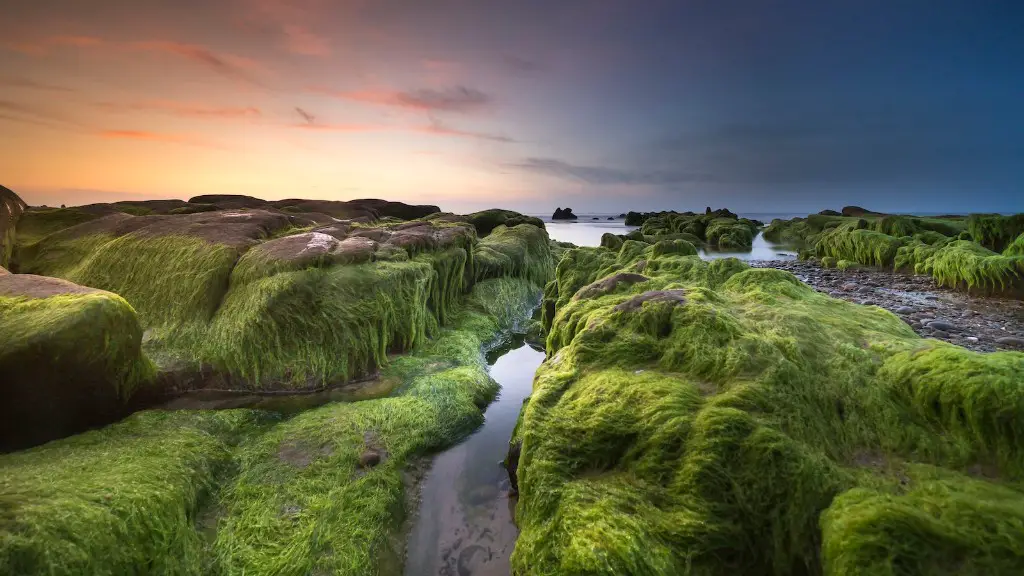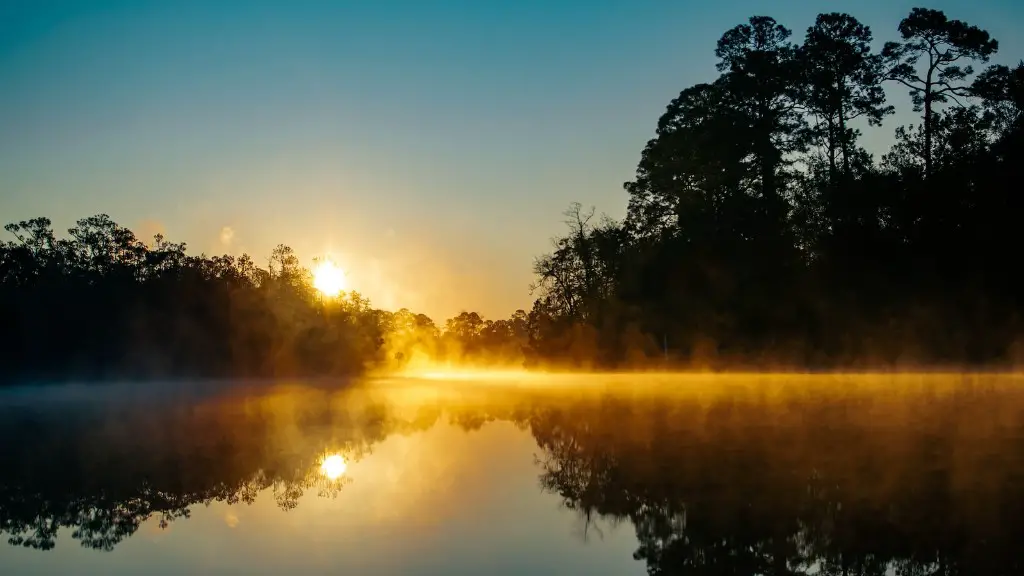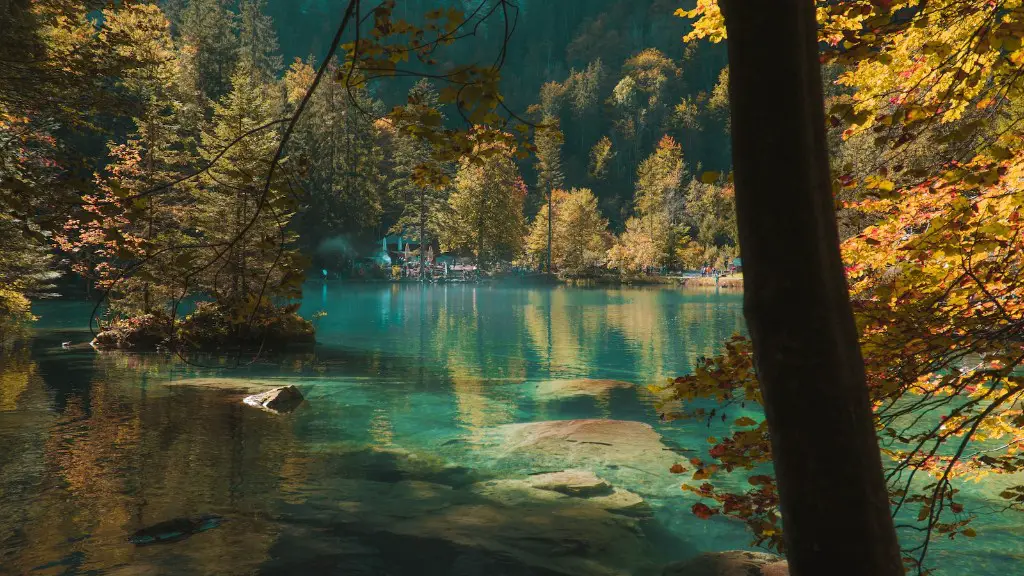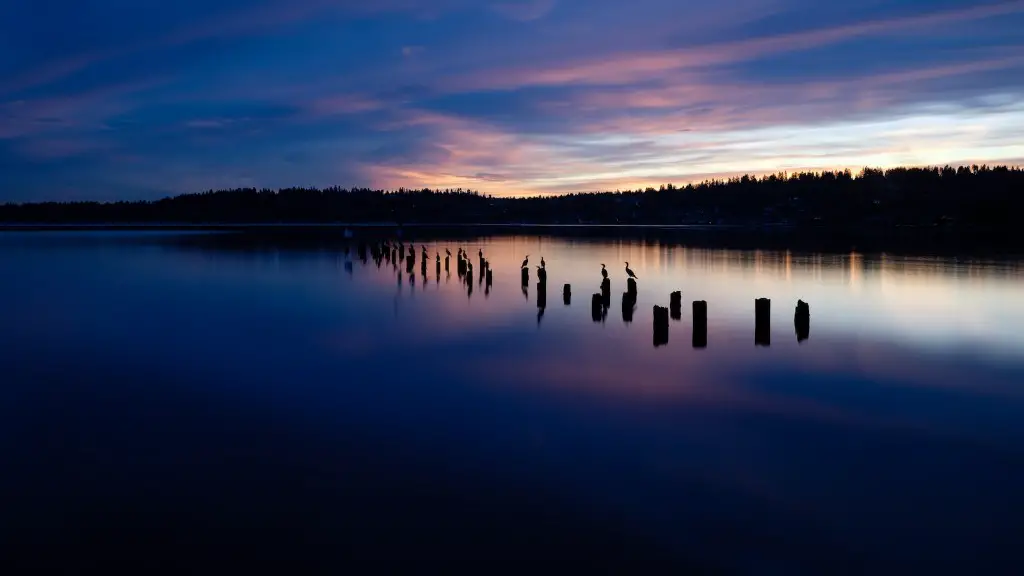A Lake Superior agate is an incredibly beautiful type of quartz that often features banding and is typically found along the shores of Lake Superior and its tributaries. The agate is often brightly colored and some are faceted making them suitable for jewelry. But how can you identify a Lake Superior agate when you’re looking for one in the beach?
The first step in identifying a Lake Superior agate is to recognize its unique color patterns. The agate is a type of quartz and will be light to dark brown and may feature reddish, yellowish or even pink traces. The banding is the most distinguishing feature of a Lake Superior agate and these bands can be seen in both large and small specimens.
The next step is to look for smooth surface like glass with a ‘skin’ covering the top and a rough or pitted surface on the bottom. The banding pattern is usually found on the top and is usually a bit curved but can also be straight or have different shapes. This surface is a result of thousands of years of tumbling in the lake or river and is typical of Lake Superior agate.
Experts suggest the best way to ensure you’re looking at agate rather than some other quartz variety is to take a closer look and check for other features and characteristics. Clear quartz will usually have flat surfaces while Lake Superior agate usually presents facets. Agates also often form around a nucleus such as another stone particle or from an internal cavity.
An advanced way of identifying a Lake Superior agate is to use a microscope or magnifying glass. The sharp and distinct banding clearly visible to the naked eye will be interpreted differently when viewed under higher magnification. Furthermore, Lake Superior agate often contains tiny inclusions of other minerals, such as quartz crystals and pyrite, that are less obvious with the naked eye. An experienced eye can differentiate these features and others between Lake Superior agate and other types of quartz.Search Techniques
When you’re searching for a lake superior agate, try looking for water worn pebbles or stones. Lake Superior agates are slippery and are often washed up in shallow and slow moving streams. Since rocks come in all different shapes, sizes and colors, you’ll want to focus on stones that are about the size of a penny and round or semi-round.
Identifying a Lake Superior agate with the naked eye is difficult, so take your time and pay attention to the details. If you’re not sure if a stone is an agate or not, it’s best to put it back and continue to search. Remember, some of the best specimens are found when you least expect them.
The best way to find Lake Superior agates is to go out during an incoming tide. As the water recedes, the agates will emerge from the sand and gravel and be visible on the beach. Usually they’ll be located near eroded outcrop areas where the stones have been exposed to the effect of the constant tides and wave action.
Polishing Techniques
Since most Lake Superior agates are found half-polished by the sand and gravel, the next step is to give them a final polish. Before you can do this, the stones need to be scrubbed with a soft brush to remove any dirt and debris. Afterward, the stones can then be put into a rock tumbler to finish the polishing. The rock tumbler will smooth the stones and further bring out the banding and various other characteristics.
There are several types of rock tumblers available, ranging from inexpensive starter models to professional grade ceramic and metal tumblers. You can also use items like diamond or silicon carbide abrasive to polish the stones. Water or oil can also be used as a lubricant to help the tumbling process.
When it comes to polishing Lake Superior agates, timing is essential. Using too much time in the tumbler can cause the stones to become undesirably smooth and shiny. If you over polish, however, you also risk losing some of the banding and colors that are part of the stone’s identity. It is best to keep a close eye on the stones and take them out after a few days.
Grading Lake Superior Agates
Once you’ve successfully identified and polished your agates, the next step is to grade them. Grading helps to separate the good from the bad and is done on a scale from A to D. Grade A is the highest grade and indicates perfect banding patterns, colors and clarity. Grade B stones are also high quality but may lack the clarity and color of Grade A specimens. Grade C stones have fewer colors, less banding and fewer fine features while Grade D stones are of lower quality.
Grading is a subjective process and can be influenced by personal preference. However, when it comes to identifying a Lake Superior agate, it is important to understand the differences between the grades in order to make an educated decision. Experienced agate collectors can often look at a stone and determine its grade without the need for further testing.
A final note: Lake Superior agates are a natural material that are extremely fragile. As such, they must be treated with care and handled with respect. Always wear gloves when handling the stones and store them in a cool, dry environment. When handled properly, Lake Superior agates can last for many generations and provide pleasure for many years to come.
Cleaning Techniques
Another important step in identifying and grading Lake Superior agates is to properly clean and maintain them. Fortunately, since these stones are typically found as water-worn pebbles, they need only minimal cleaning. Start by wiping off the stone with a damp cloth to remove dirt and debris. Be sure to keep the stones damp during the cleaning process to prevent damage.
Next, you’ll need to use an appropriate cleaning solution. Common household items like vinegar and baking soda can be used but you should also consider cleaners specifically designed for cleaning stone. After the stone has been cleaned, rinse off any residue and gently wipe the stone dry.
You may also find it useful to use tweezers for small pebbles and abrasive tools for larger stones. Be careful to not damage the stone and use light pressure when cleaning. As a last step, you can polish the stone with a soft cloth to help bring out the color and shine.
Identifying Fake Agates
In recent years, the market has seen an influx of counterfeit Lake Superior agates. In order to avoid purchasing a fake, it’s important to familiarize yourself with the characteristics of an authentic Lake Superior agate. Check the stone for signs of chipping, fading, or discoloration. Many fakes are plated with deposits of gold and silver to resemble genuine stones. Also, look for suspicious logos or labeling that may indicate the stone is not genuine.
Furthermore, buyers should be aware of prices that may seem too good to be true. If a deal is too good, it likely is – take the extra step to confirm the stone’s authenticity. When in doubt, ask for a certificate of authenticity from the seller. This will help to ensure that the stone is genuine and can help you avoid being scammed.
Finally, consult an expert before making a purchase. Experienced collectors can help you to differentiate between authentic stones and fakes. They can also give you advice on grading stones and how to spot a good deal.




